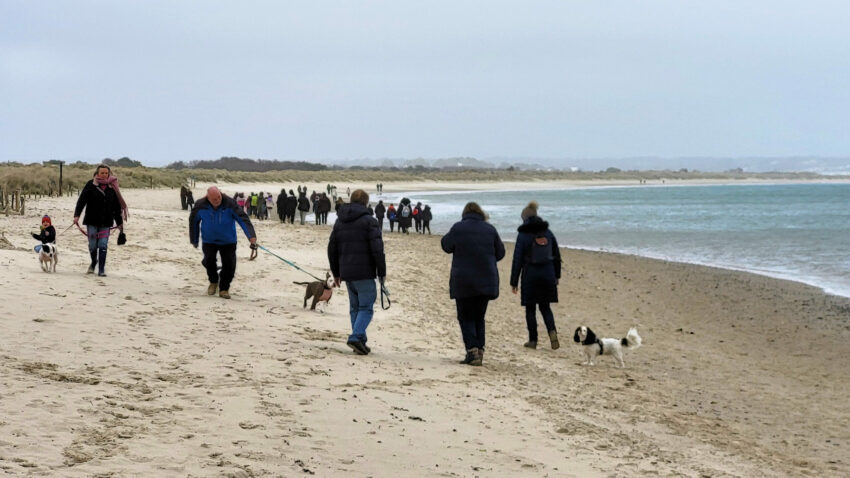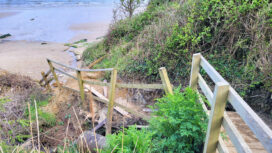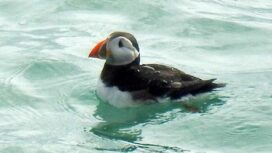Volunteers have begun an ambitious scheme to quantify the cost of the oil spill from the Wytch Farm pipeline on the long term health of wildlife in Poole Harbour.
The Birds of Poole Harbour charity coordinated an emergency survey of thousands of birds all around the harbour on Sunday 2nd April 2023 and says that oiled birds are still being discovered at the rate of four or five a day – with worries that fatalities will follow soon.
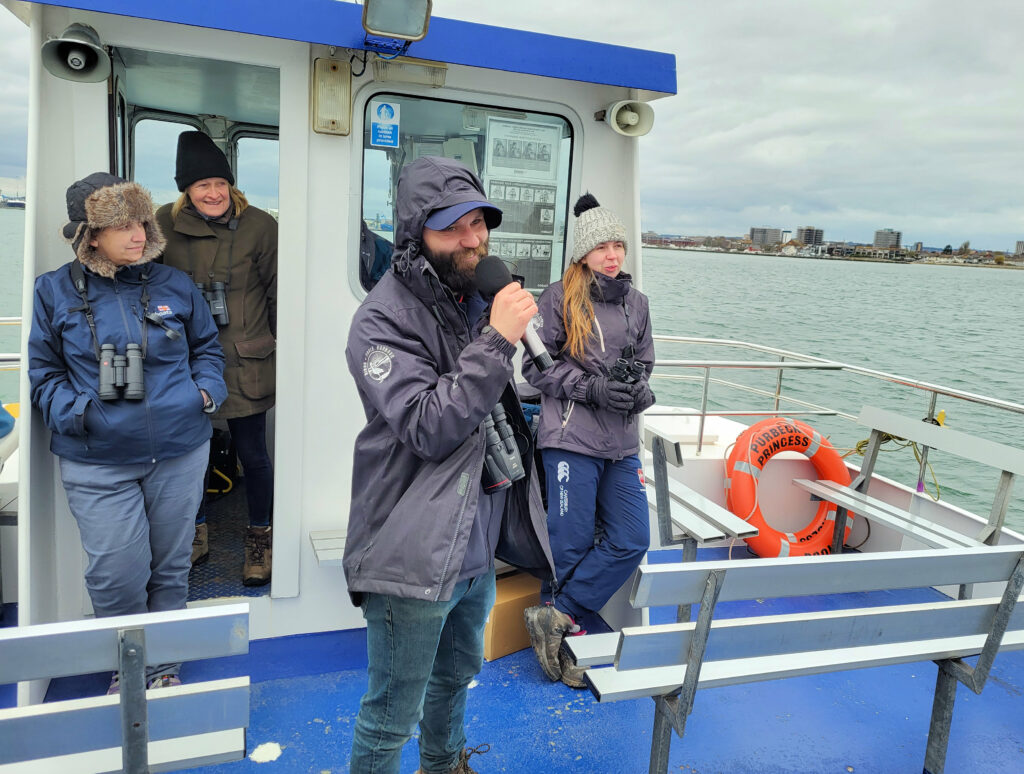
Joe Parker (centre) helped organise volunteers for an emergency survey across the harbour
Four or five oil stained birds found every day
Thirty sectors were identified right around the harbour and volunteers monitored each of them for an hour at low tide when the greatest number of birds were expected to be feeding.
Results will be collated over a number of days, but already Canada geese and curlew have been added to shelduck, gulls and other breeds which have been spotted preening oiled feathers.
Joe Parker, events manager for charity Birds of Poole Harbour and a volunteer for the British Trust for Ornithology, said:
“Thankfully, very little visual impact was logged in our southern harbour sector, with just two discoloured Canada geese and one curlew, but the longer term impacts on the habitat itself may be where issues will be substantial.
“The reality is that four or five birds a day are being found with oil stained plumage – shelduck, grey plover, black headed gulls with oil on their bellies where they are moving through the water and picking up the oil.”
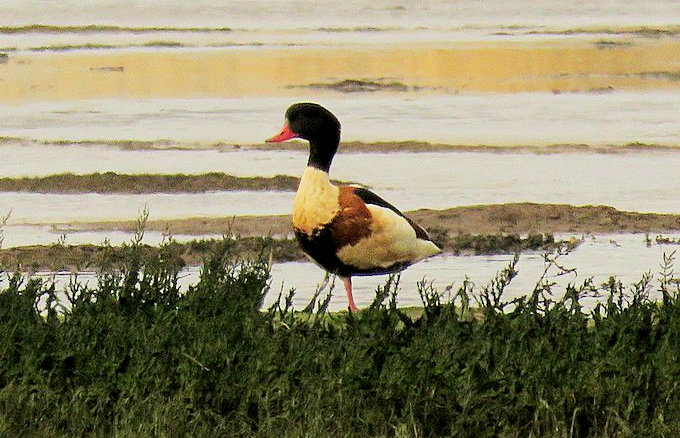
A shelduck with oil staining on its white plumage
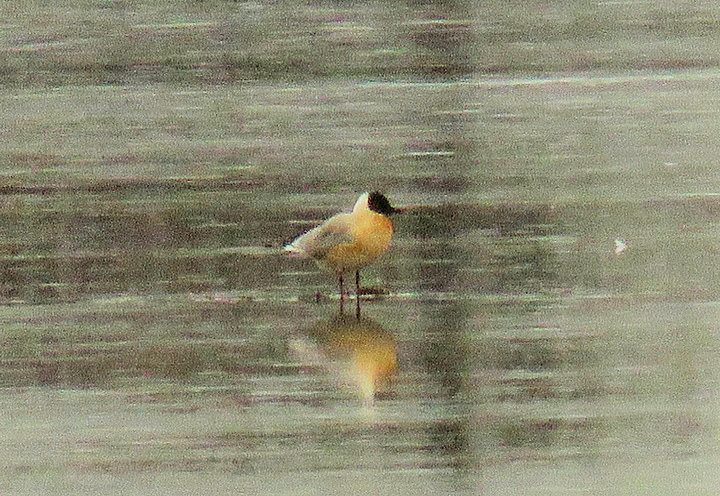
A gull which has also been oil stained while feeding in Poole Harbour
“I expect some birds will unfortunately die”
Joe added:
“These birds will then be distressed and will preen a lot, so the oil gets into their gut and I expect some of them are unfortunately going to die because of this.
“We counted every wetland bird to get a good sense of the numbers of birds using the harbour at that snapshot in time and on top of that we were also looking for signs of oil contamination on the shoreline, on the water and birds which have themselves got oil stained plumage.
“It’s not a great picture, but we will keep our fingers crossed that the impacts are negligible. We will want to analyse the data as quickly as possible, and hope to have a full picture in the next few days.”
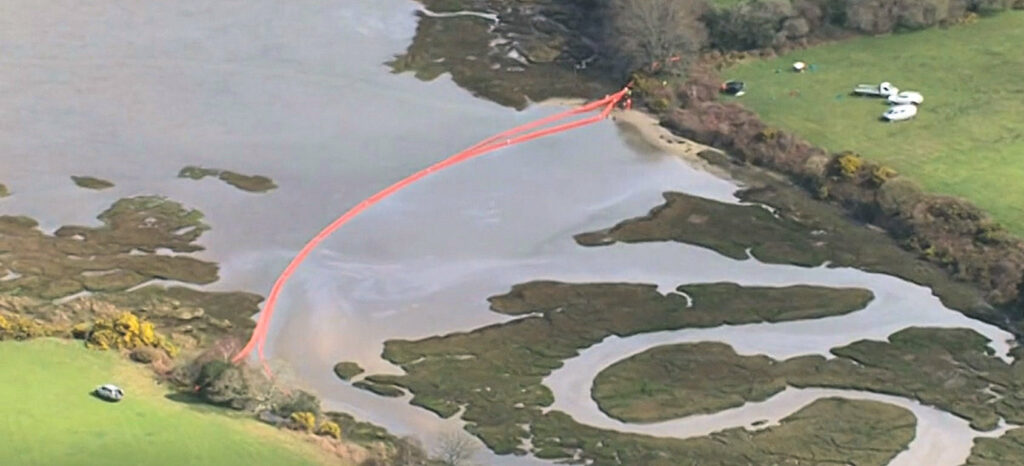
There are now 11 booms put up around the source of the leak
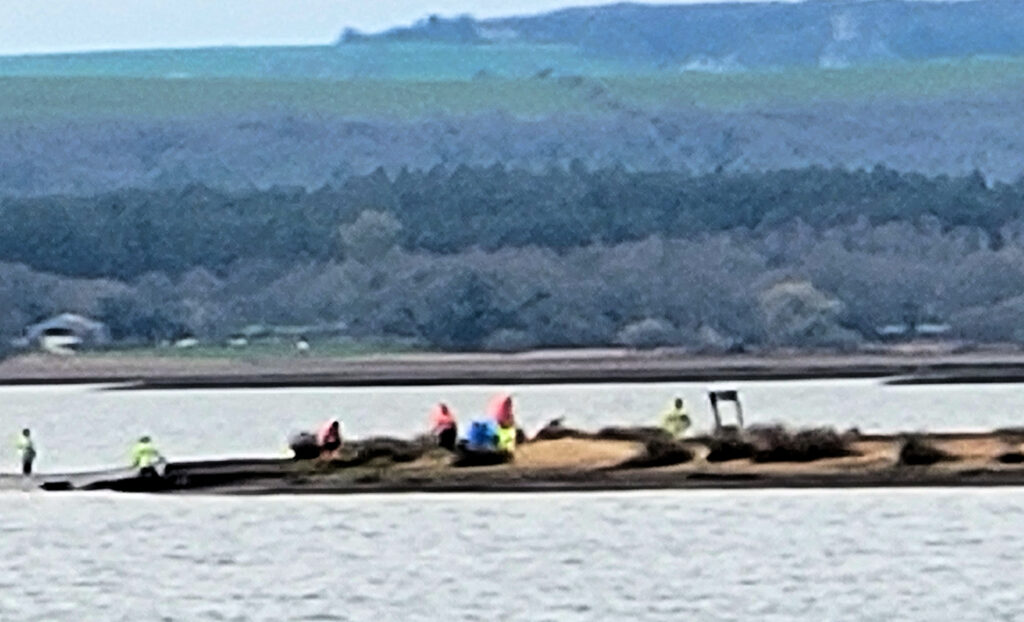
Officials carry on with the major clean up at Arne on Sunday 2nd April
Cofferdam built to help reach damaged pipe
The survey was held as it was revealed that a cofferdam has been built around the pipe which leaked an estimated 200 barrels of reservoir fluid – a mixture of 85 percent water and 15 percent oil – into Ower Bay on Sunday 26th March 2023.
The cofferdam – an enclosure built within the bay so that water can be pumped out – has allowed the damaged pipeline to be reached and sealed while excavation and clean up work continues in the area where oil escaped from Perenco’s Wytch Farm site near Corfe Castle, the largest onshore oil field in Europe.
Following the incident, operations were closed down at Wytch Farm and they remain temporarily suspended.
Poole Harbour Commissioners (PCH) said that by Monday 3rd April 2023, an estimated 140,000 litres of oily water and more than five tons of contaminated beach material had been recovered and that work was still continuing.
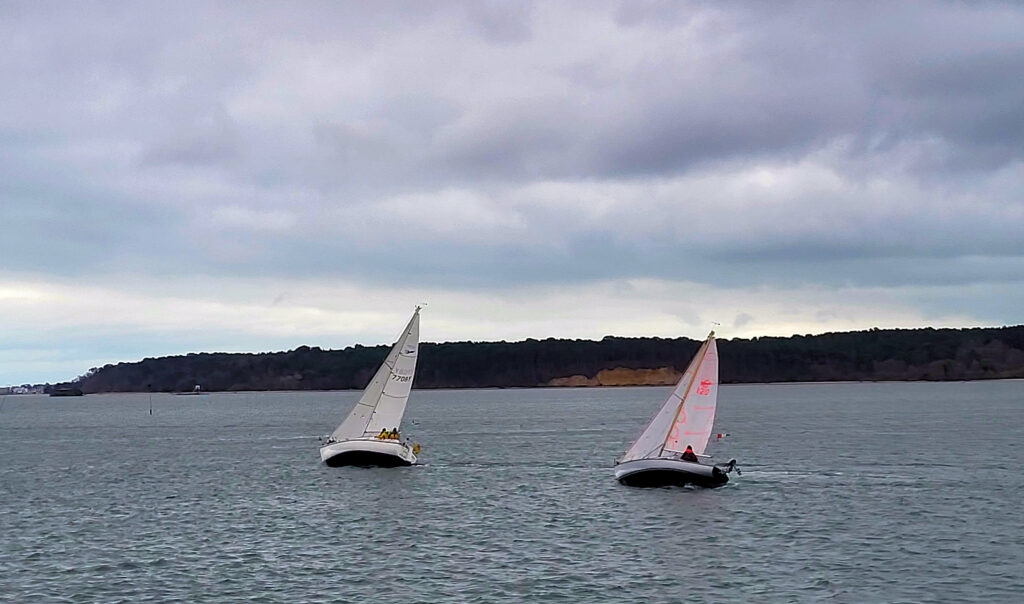
Poole Harbour is almost totally deserted after advice to stay out of the water
Avoid using beaches for recreation
Jim Stewart, chief executive officer of PCH said:
“People should still avoid using beaches in the Poole Harbour area for any recreational use, such as gathering shellfish, swimming, bathing, water sports and fishing. Pets should also be kept away from the water.
“We are aware that there is speculation online regarding the leak and a suggestion that oil is still leaking from the original source.
“Perenco have confirmed that at the time of the leak the source of the leak was shut down and pressure was removed. Whilst some contaminated oil remains in the pipe, Perenco have taken mitigation measures to minimise the risk of further oil going into Poole Harbour.
“A cofferdam at the leakage site has been constructed and the pipeline has been sealed. Pipeline excavation work is continuing, flushing and skimming operations continue non-stop in Ower Bay and the containment measures involving 11 booms are proving successful.”
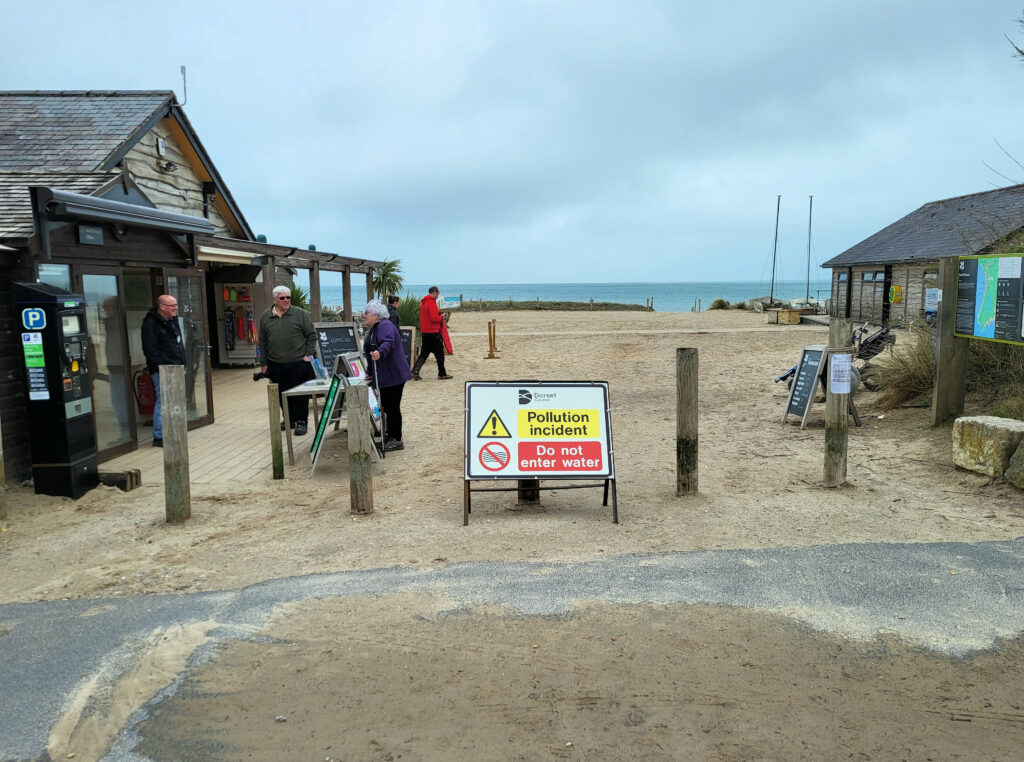
Pollution warning signs have been put up at beaches in Studland

A mobile sauna has been removed from South Beach in Studland while warnings are in place
Studland Bay warning signs set up
Easter visitors to Dorset are being advised not to swim or go out on the water in Poole Harbour or on beaches at Studland as the clean up operation continues at Ower Bay, Goathorn and Arne.
Signs have been set up at Shell Bay, Knoll Beach and South Beach warning people not to go into the water and a mobile sauna at South Beach has been taken away from the water while the emergency continues.
It is thought that the restrictions will remain in place until at least the Easter weekend and Dorset Council has advised instead that beaches at Swanage, Kimmeridge, Lulworth and Durdle Door are safe alternatives to use.
RSPB Arne’s senior site manager Peter Robertson is concerned that the wider picture could be much worse and has described oil pollution in the mud at the bottom of Poole Harbour as a ‘ticking time bomb’.
He warned that the true effect in Poole Harbour might not be known for years to come as reservoir fluid is soluble in water and toxic elements of the spill will be absorbed into the mud which is the source of food for most of the harbour’s rare birds.
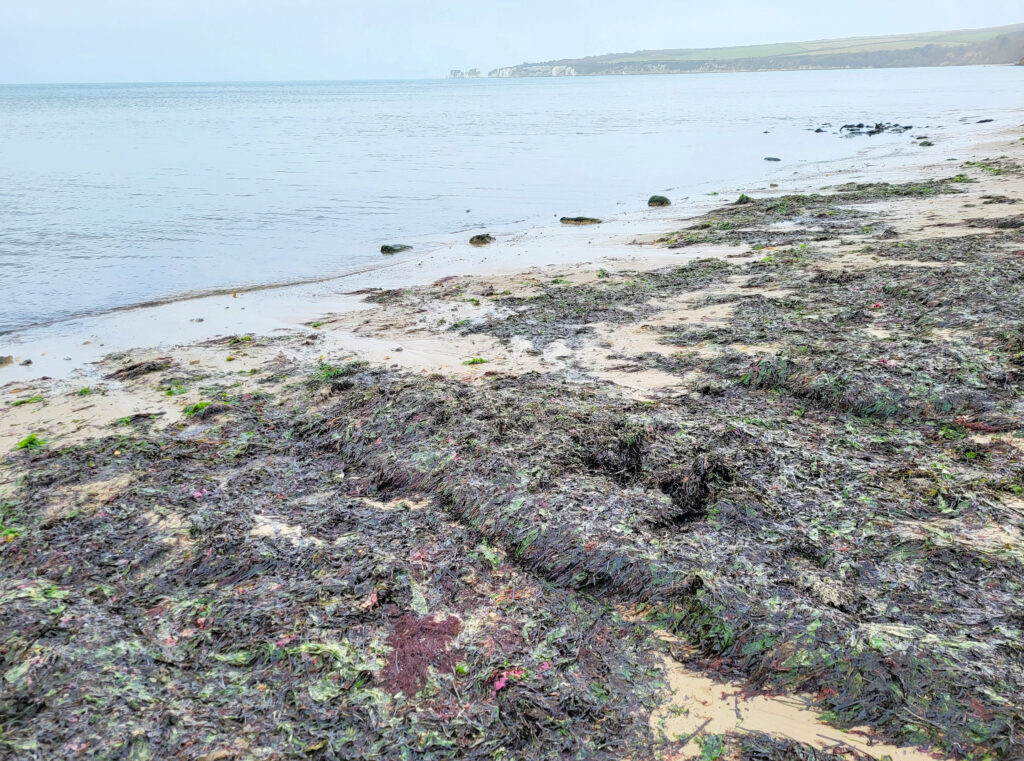
Oil has been discovered in clumps of seaweed on the shores around Studland
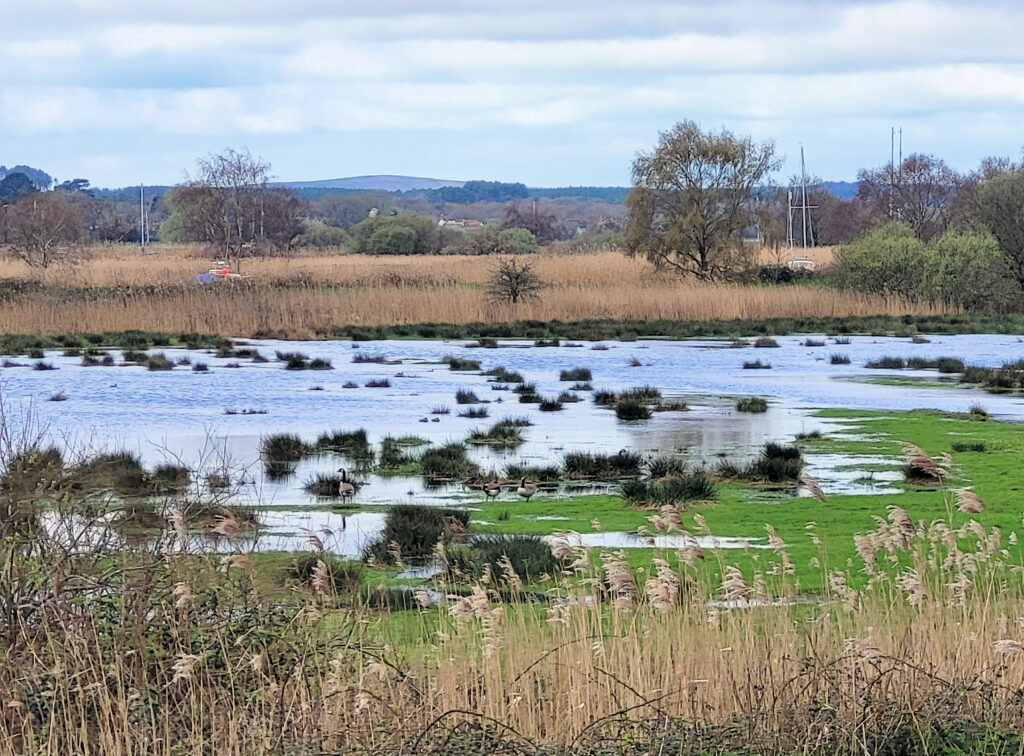
No one knows what effect polluted mud will have on birds in the coming years
“This is a ticking time bomb”
Peter said:
“There will be a slow release of toxins and we just don’t know what damage they will cause, but make no mistake, this is a ticking time bomb.
“With birds continually flying around and feeding on the shore there continues to be a risk that more birds will become contaminated.
“The longer term impact is of just as much, if not more, concern to us. We have seen a release of a large volume of a highly toxic substance released into a globally important, highly sensitive ecosystem which is very fragile and very sensitive.
“It breaks down into the water column and into the mud, the very basis of the food chain in Poole Harbour. Birds come here to eat the invertebrates and we won’t know the wider impact this will have on their health until it unfolds over weeks, months or even years.”
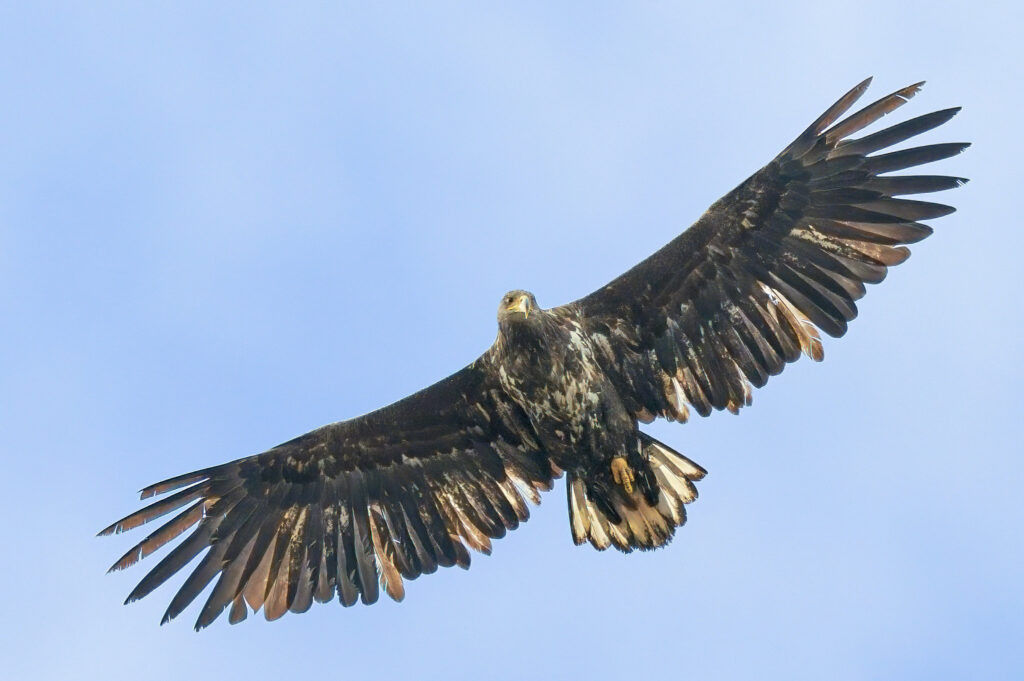
One of the white tailed eagles takes to the sky over the Wareham Channel
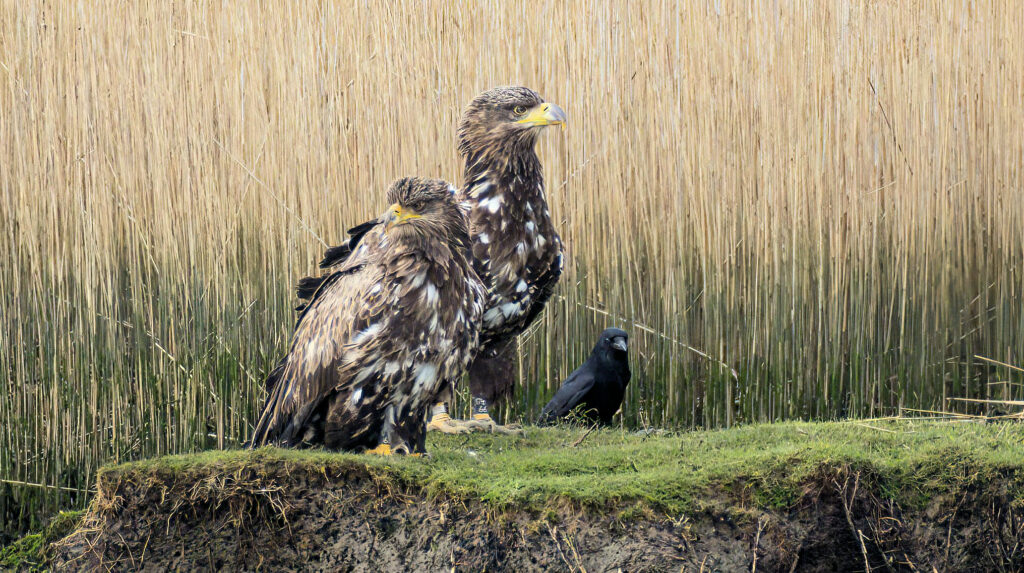
The pair of white tailed eagles have been spotted in reed beds near Wareham
White tailed eagles spotted near Wareham
The oil spill came at a critical time for bird life in Poole Harbour, as winter migrants are feeding heavily for their journey back to the Arctic, while rare summer visitors such as osprey have returned.
As osprey feed exclusively on fish, there are fears for the heath of their prey as oil is absorbed into the harbour waters and mud.
A pair of white tailed eagles on reed beds between the rivers Frome and Piddle near Wareham have also been spotted in the last few days, along with the ospreys, buzzards and marsh harriers.
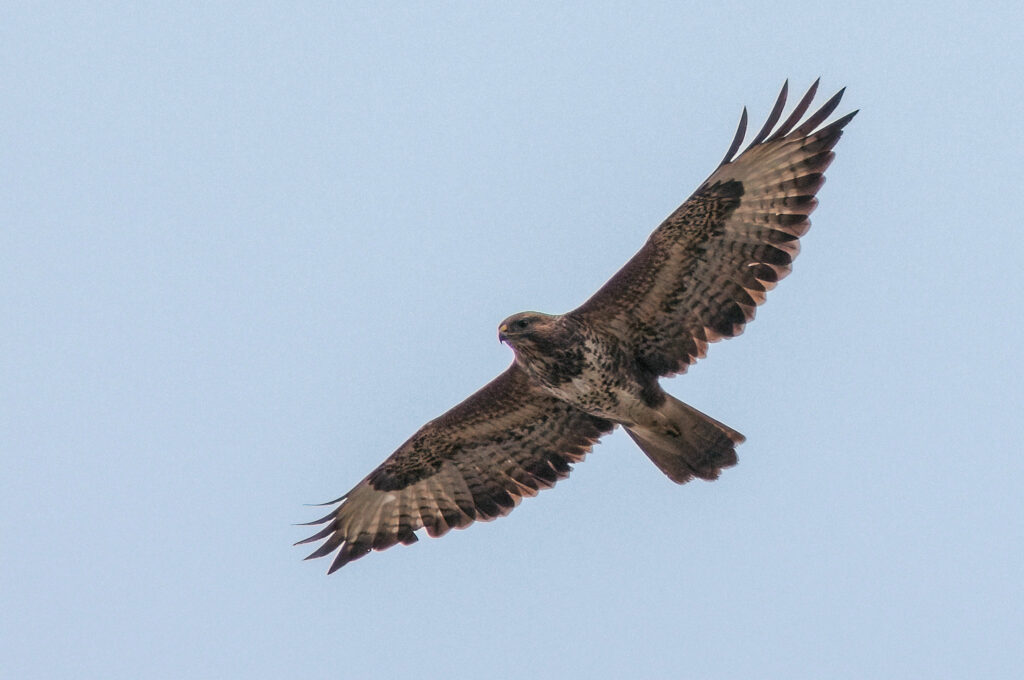
Buzzards and other birds of prey have become active around Poole Harbour
Birds using Poole Harbour as a service station
Paul Morton, of Birds of Poole Harbour, said:
“Right now huge numbers of birds are on the move, having over-wintered further south and will soon be using Poole Harbour as a service station to feed up before continuing north.
“It is an area of huge concern that we don’t know how much of the oil will settle on the mud and harbour shorelines and what impact will that have on marine invertebrates which form much of the birds’ diets.”
